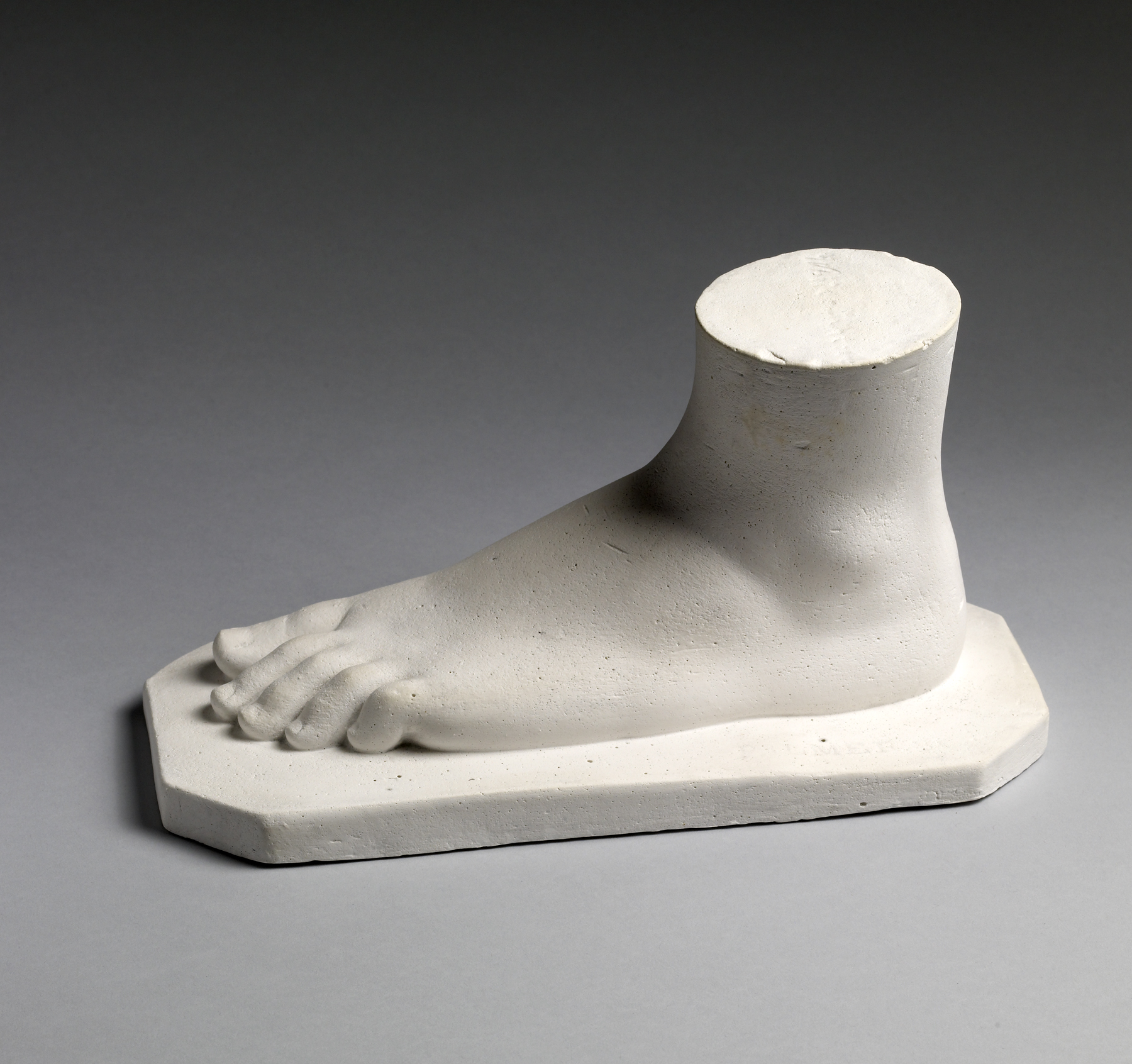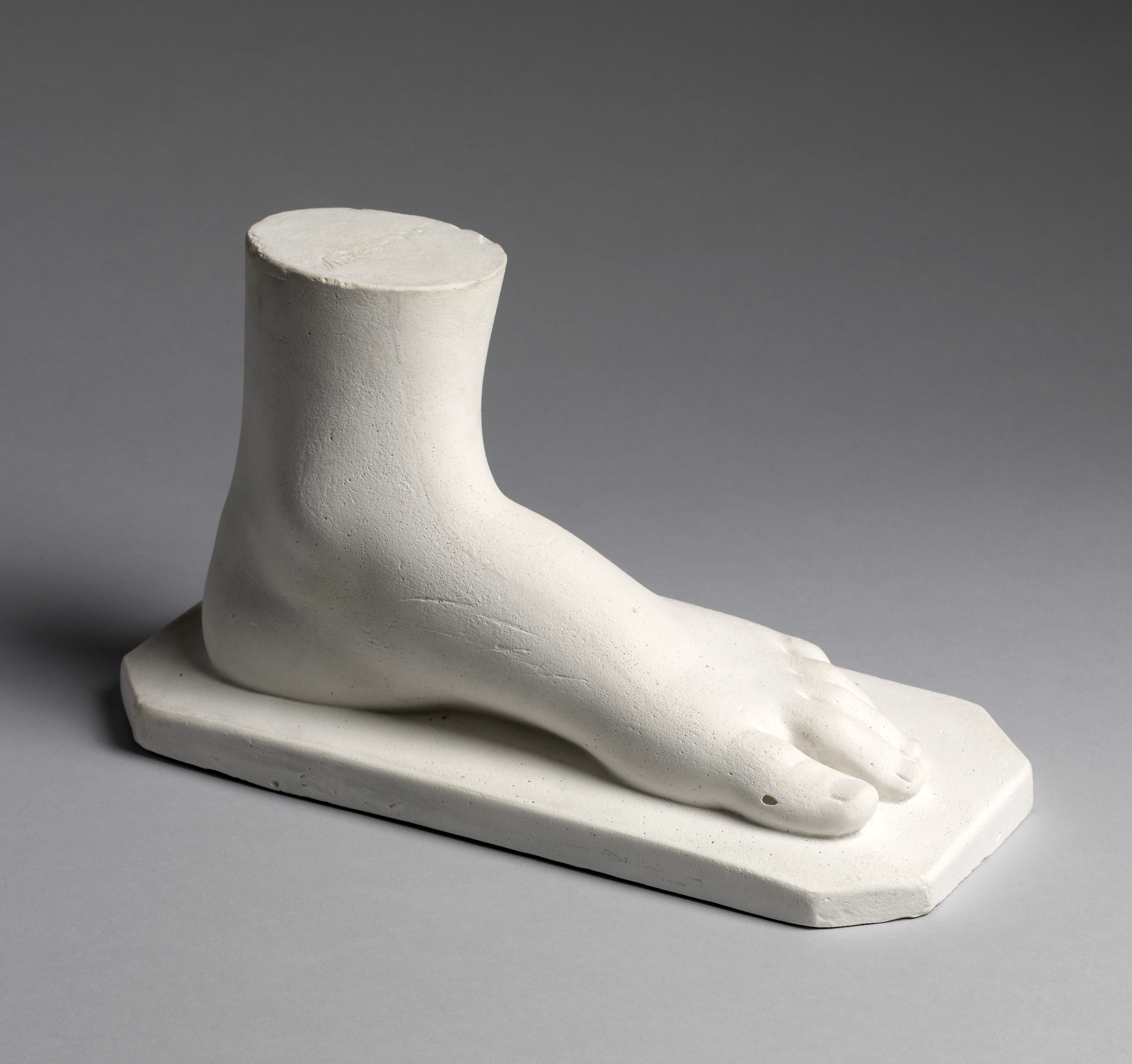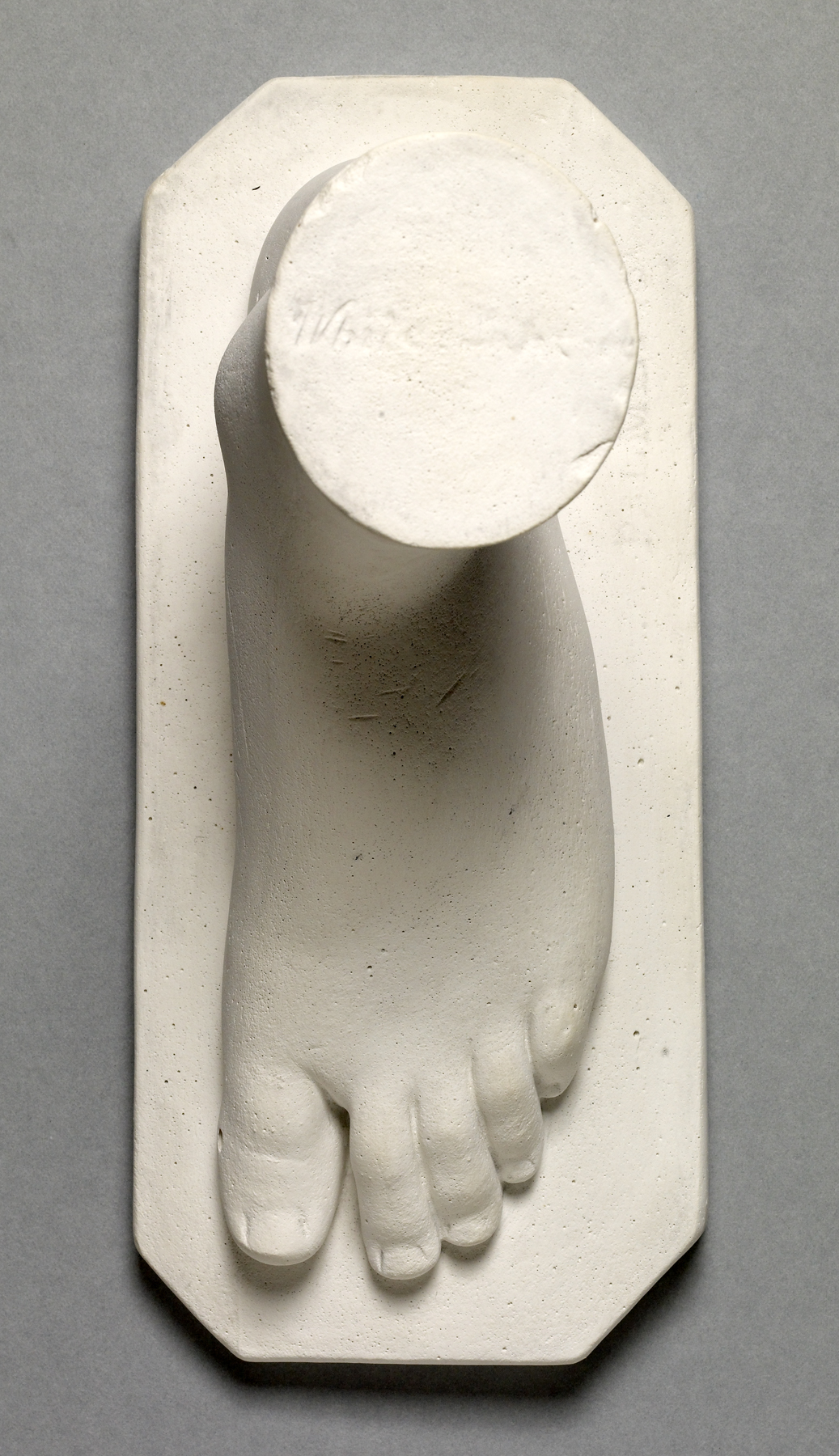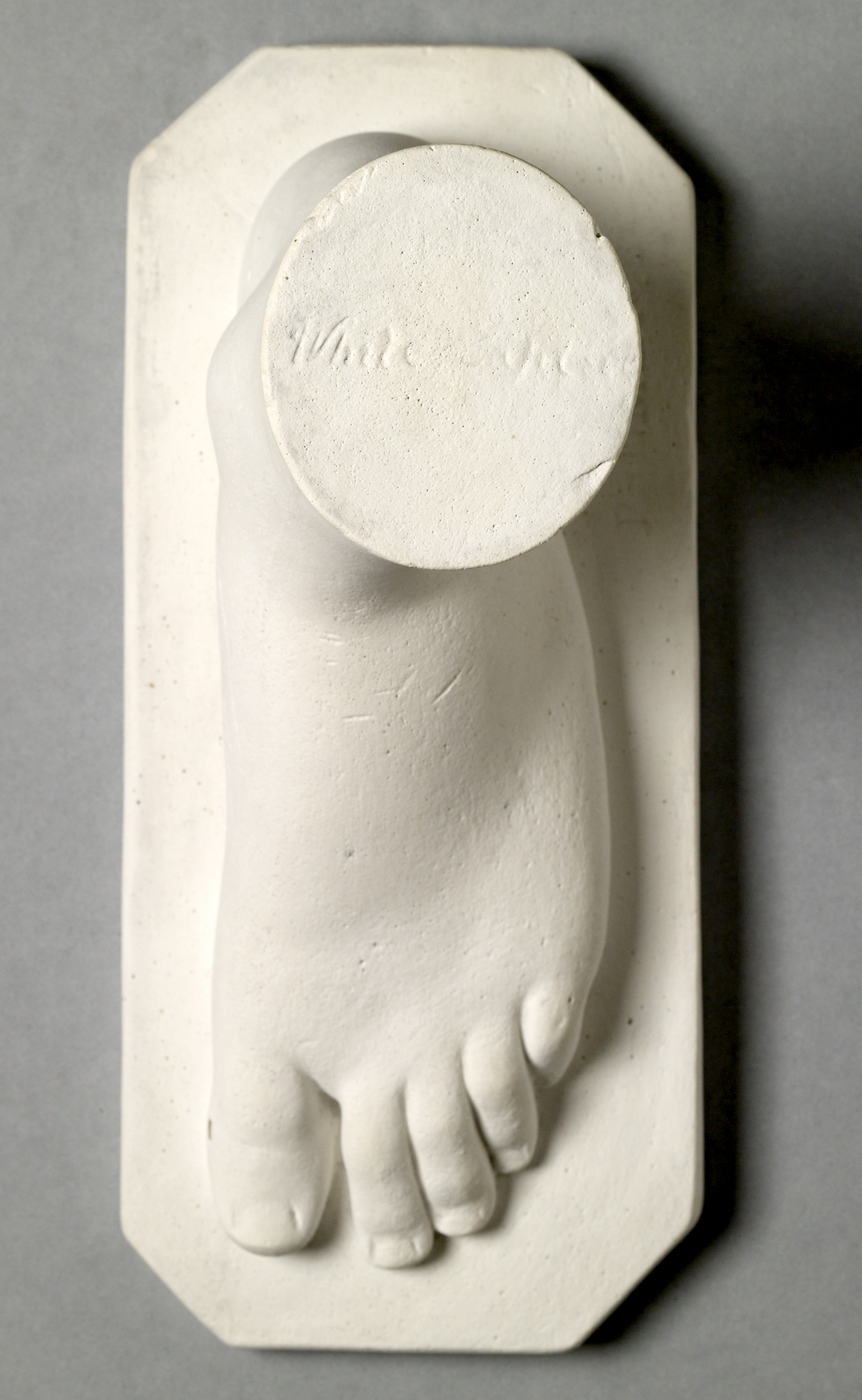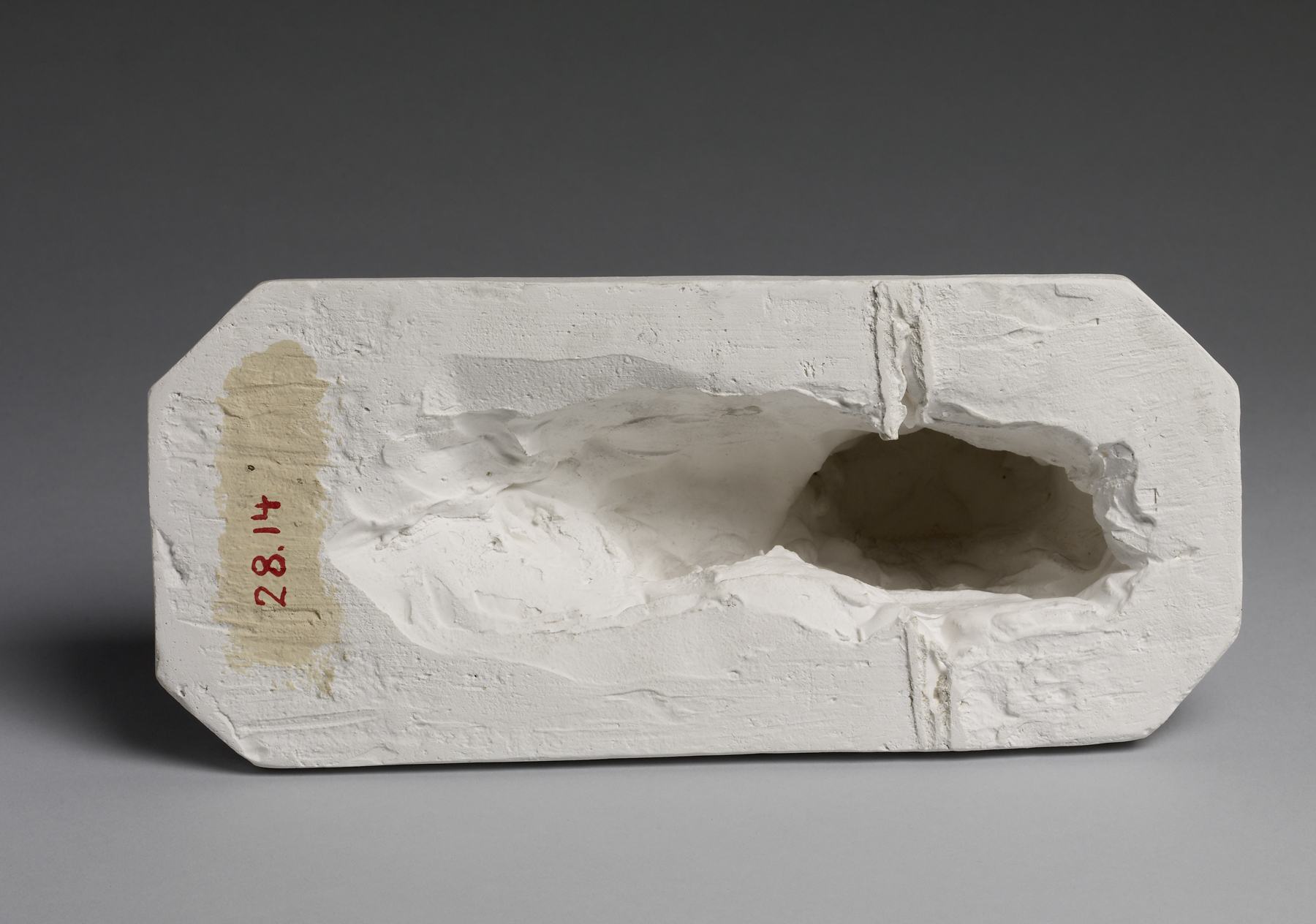Left foot of "The White Captive"
(18th and 19th Centuries )
Palmer, who was self-taught, was among the first American sculptors to break with the prevailing neoclassical style and adopt a more naturalistic approach.
This plaster is of the left foot only of Palmer's sculpture "The White Captive." Palmer created a separate foot carved in marble in early 1860, carved by Charles Calverley, and that at least two plaster versions were also made. One is now at the Walters, and the other, which was formerly owned by Henry T. Tuckerman of New York, is now lost.
This plaster foot was found in the Walters' townhouse, at 5 West Mount Vernon Place, in the 1940s. Although no documentation relating to the foot has come to light, it is likely that it was acquired by, or given to William T. Walters around the time it was made. William purchased a bust of Flora from the artist and a full-length subject of a child, titled "First Grief." A daguerreotype of Palmer's "Sleeping Peri" is in the museum's archive, and was also found at 5 West Mount Vernon place.
Inscription
Provenance
Provenance (from the French provenir, 'to come from/forth') is the chronology of the ownership, custody, or location of a historical object. Learn more about provenance at the Walters.
William T. or Henry Walters, Baltimore [date and mode of acquisition unknown]; Walters Art Museum, 1931, by bequest [accessioned in 1941].
Exhibitions
| 2015 | Rinehart's Studio: Rough Stone to Living Marble. The Walters Art Museum, Baltimore. |
Geographies
USA (Place of Origin)
Measurements
H: 6 × W: 4 13/16 × D: 10 13/16 in. (15.2 × 12.3 × 27.5 cm)
Credit Line
Acquired by William T. or Henry Walters
Location in Museum
Not on view
Accession Number
In libraries, galleries, museums, and archives, an accession number is a unique identifier assigned to each object in the collection.
In libraries, galleries, museums, and archives, an accession number is a unique identifier assigned to each object in the collection.
28.14

